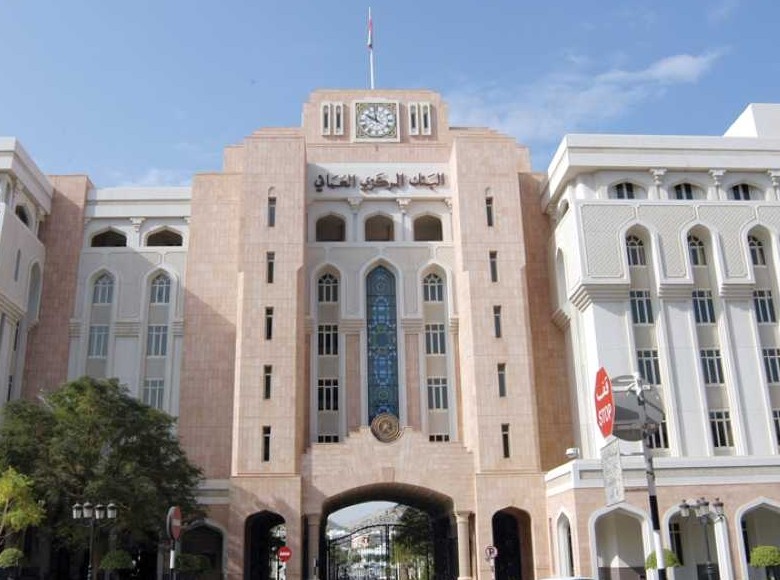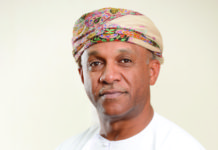Improving economic prospects, robust credit offtake and the promising performance of Islamic banks have led to a strong showing by the financial sector in Oman
Omani banks stand to benefit from a robust growth in oil prices and an easing of capital and credit norms of commercial banks. Like any other Gulf country, the growth in oil revenue in Oman will drive demand for credit from private sector. Apart from a growth in oil prices, economic growth also started recovering, which will demand for bank credit. Oman’s economy grew by 8.7 per cent in 2017, after two years of recession.
A high oil revenue will definitely lead to a growth in liquidity in the financial sector, which bodes well for deposit growth. Oil prices have already crossed $75 a barrel to touch a three-year high, which fuels an upbeat outlook for financial institutions.
Asset growth
The asset growth of Omani banks is expected to gather momentum. In a move to ease lending to drive economic growth, Oman’s banking regulator eased capital and credit exposure rules for commercial banks in April 2018. Two years ago, the Omani economy and financial markets came under pressure from low oil prices and rising US interest rates, which are closely linked to rial rates, so authorities are keen to keep banks liquid and to encourage them to lend. The capital adequacy ratio, the proportion of capital that banks must hold back from lending, was reduced to 11 per cent from 12 per cent. This is expected to increase the volume of additional credit available to RO7.8 billion from RO5.2 billion. Among other steps, banks are able to consider deposits obtained from other local banks towards their own deposit bases. This will give them more room to lend while obeying a regulatory requirement to limit the credit they extend to 87.5 per cent of their deposit bases.
Prudential limits for banks’ exposure in all currencies for various short-term maturities were increased, in order to let banks manage their liquidity gaps more efficiently. This will give banks more flexibility to utilise credit lines available to them with their foreign and local correspondents at a reasonable cost.
In addition, the ceiling for banks’ credit exposure to non-residents and placement of their funds abroad was raised to 75 per cent of their local net worth from 50 per cent, which will increase their external borrowing capacity to finance local projects of national importance.
In another move to ease lending conditions, the central bank allowed commercial banks to factor in their local interbank money market positions when calculating deposit bases. In fact, the liquidity situation in the financial system was tight in 2017, as several government entities withdrew their deposits. However, the cash flow started improving since the beginning of 2018. Since Oman government and state-owned entities like the Electricity Holding Company and Petroleum Development Oman were relying heavily on overseas markets for their funding requirements in 2017, the pressure on liquidity within the domestic market was less.
However, the Oman government has raised debt funds from the domestic market by way of development bond issues in the recent past to partially meet the budget deficit. Of late, the Central Bank of Oman plans to raise RO100 million by way of a development bond issue. This is part of a plan to raise RO400 million by way of funding projected budget deficit of RO3 billion this year. Such government development bonds in Oman are generally subscribed to by institutional investors, especially pension funds, banks and high net worth individuals.
According to the latest statistics released by the Central Bank of Oman, financial institutions in Oman have extended loan to the extent of RO24.1 billion by the end of March 2018, indicating a robust year-on-year growth of 7.8 per cent. Credit to the private sector alone grew by 6.3 per cent to RO22.4 billion by the end of 2018. Of the total credit to the private sector, household sector under personal loan head stood at 45.4 per cent, non-financial corporate sector at 46.2 per cent, while financial corporation and other sectors constituted 5 per cent and 3.4 per cent, respectively.
Also, total deposits registered a year-on-year growth of 4.1 per cent at RO22.3 billion, with private sector deposits growing by 2.9 per cent to RO14.2 billion by March-end 2018. Sector-wise, the contribution of households to total private sector deposits was 49 per cent, followed by non-financial institutions at 29.5 per cent, financial institutions at 19 per cent, and other sectors at 2.5 per cent.
Conventional banks have achieved a year-on-year growth in total credit of 6 per cent by March-end, mainly due to a 4.1 per cent growth in credit to the private sector at RO18.6 billion. Conventional banks’ overall investments in securities grew by 2.7 per cent to RO3.2 billion. Investment in government treasury bills stood at RO429.8 million by end-March 2018. Aggregate deposits held with conventional banks marginally increased by 0.6 per cent to RO19.1 billion in March 2018, from RO19 billion for the same period a year ago.
Islamic banking
Islamic banks provided financing to the extent of RO3.2 billion by end-March, compared with RO2.6 billion a year ago. Total deposits held with Islamic banks and windows also registered a significant increase to RO3.2 billion in March 2018, from RO2.4 billion as of the end of March 2017. The total assets of Islamic banks and windows amounted to RO4 billion as of the end of March 2018. Within a short span of five years, Islamic institutions have emerged as one of the fastest growing segments within the financial services industry in Oman. Also, Islamic banks are trying to strengthen their position by expanding branch network and with new products and better services. Islamic financial institutions, including window operations of conventional banks, have more than 12 per cent share in total bank assets in the country. An important segment which will drive demand for credit this year is going to be the corporate sector. As some of the projects have reached the implementation stage, demand for project finance is expected to grow, compared to last year.
These projects include a $5.65 billion-refinery in Duqm, Salalah ammonia project, Salalah Liquefied Petroleum Gas, an acetic acid project, an automobile body building unit, a liquid berth, an integrated fishing harbour and several petrochemical ventures are in various stages of planning and implementation.
The state-owned Oman Oil Company (OOC) started work on two major projects – Salalah Ammonia Plant and Salalah Liquefied Petroleum Gas (SLPG) – in Dhofar. A major portion of SLPG’s capital expenditure of $826 million is funded by financial institutions. The project, which has LPG extraction facilities at Salalah Free Zone, is developed by Oman Gas Company – a subsidiary of Oman Oil Company. The cost for the ammonia project, developed by Salalah Methanol Company, a subsidiary of Oman Oil Company, is estimated at $463 million. The project will span over 12 hectares at Salalah Free Zone and will include facilities for manufacturing, storing and exporting ammonia. The construction work of the plant, which will produce 1,000 tonnes of ammonia per day, is expected to be completed by 2020.
Energy major BP is in discussion with the Oman government, its energy investment arm Oman Oil Company (OOC) as well as a potential partner, to press ahead with the implementation of its world-scale acetic acid plant in Duqm — a project involving an investment of around $1 billion. This will also drive demand for project finance.
The proposed Duqm acetic acid project, first unveiled few years ago, envisions a large-scale petrochemical project based on BP’s proprietary SaaBre technology. Apart from these projects, the private sector, along with an active participation of investment funds, are also setting up several other major projects, which include a dairy venture, a poultry project and a red meat venture. These are in addition to a series of tourism projects, especially hotels and resorts, planned in different parts of the country. The flow of credit to the traditional sectors, especially agriculture and fisheries, have also strengthened to support farmers and fishermen in an apparent move to diversify the economy.
The state-owned Oman Development Bank (ODB) is focusing on providing farm loan to support a government initiative to strengthen food security. The loan for farmers will help achieve self-sufficiency to maintain agriculture crops and livestock, and help establish and sustain agriculture with value addition and growth in production. The bank provides subsidised developmental loans for the agricultural sector in many fields, which include establishing new farms, irrigation systems, expansion and development of farms; developing and maintaining farms, drilling wells for agricultural purposes and bee-keeping.
The bank’s loans are mainly for seasonal crops, which have a short cultivation period with a fixed productive cycle. The bank has fixed a maximum limit for seasonal loan at RO50,000 and can be utilised for cultivating vegetables and fruits, including chilli, cucumber, eggplant, watermelon, melon, tomatoes, potatoes, cabbage and wheat. Agricultural loans provided by ODB offer several advantages over other loans as it has simple procedures to get approval and the fund is disbursed directly to the owner of the agricultural land. The net earnings growth of Omani banks were mixed in the first quarter of 2017, mainly on account of an increase in cost of funds and a higher corporate income tax, which was increased from 12 per cent to 15 per cent in February 2017. Although the growth in net earnings of banking sector slowed down, the financial position of the banks in Oman in terms of asset quality, provision coverage and capital adequacy remained sound.
Oman’s biggest bank – Bank Muscat – reported a net profit of RO44.81 million for the three months period ended March 31, 2018 compared to RO44.23 million net profit reported for the same period of 2017, a year-on-year increase of 1.3 per cent. The bank’s net interest income from conventional banking and income from Islamic financing rose 3.4 per cent to RO71.84 million in the first quarter of 2018 compared to RO69.47 million for the same period of the previous year.
However, the National Bank of Oman reported an 8.7 per cent fall in net profit at RO12.6 million for the first quarter of 2018, against RO13.8 million posted for the same period of last year. Net interest income and income from Islamic finance also fell by 4.2 per cent to RO22.9 million from RO23.9 million during the period under review. However, BankDhofar posted an 8.6 per cent growth in net earnings in the first quarter of 2018 at RO13.59 million.
NBFCs
Leasing and hire purchase firms are showing signs of stability and overall asset growth is expected to rebound this year. A recovery in economic growth since last year is a positive sign for the sector. A growth in investment in infrastructure generally results in a ‘trickle-down effect’ as it will increase demand for capital goods and the general demand for credit will go up.
Non-banking finance companies (NBFCs) will also go through a period of consolidation, better management of receivables and better focus on the quality of assets. Since the overall growth in demand for finance was reduced due to a slowdown in economic activity last year, the competition among NBFCs and other players is growing. The number of players in the market has gone up with the entry of Islamic banks and windows more than three years ago. A fall in demand for vehicles and a slowdown in government expenditure have resulted in a lower demand for funds from leasing firms last year. As the market conditions are challenging, two leading leasing firms have decided to go for a merger.
National Finance Company has acquired Oman Orix Leasing Company. After the acquisition, National Finance turnout to be the biggest non-banking finance company (NBFC) in Oman, with a combined strength of 23 branches, including its head office, across the country. It is the largest leasing firm in Oman in terms of paid-up capital, net worth, lending assets, net profit and branch network.
National Finance issued additional shares of the company to the shareholders of Oman Orix at a swap ratio mutually agreed by the shareholders of both companies.







